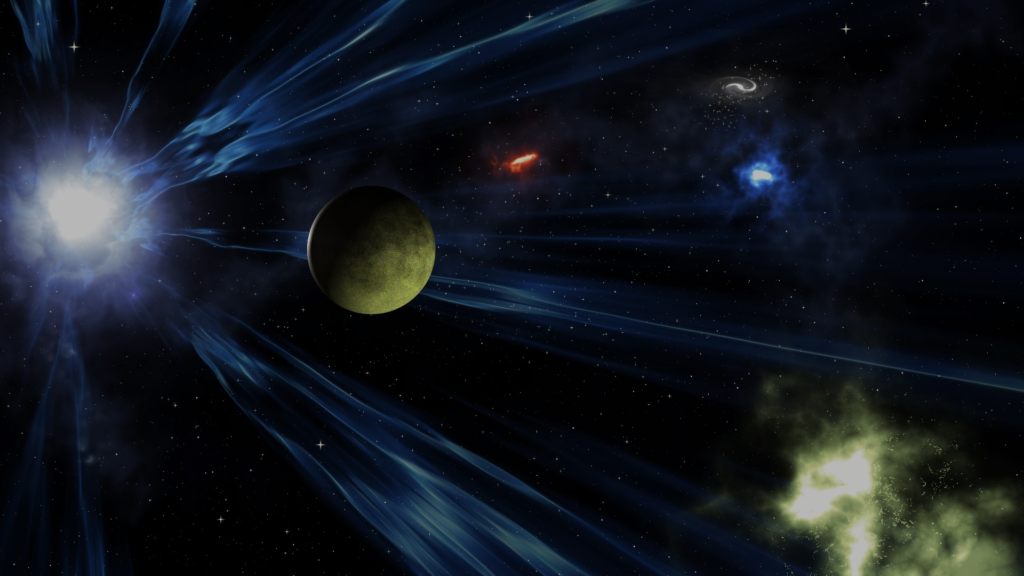## A Journey Through the Milky Way Galaxy: Its Structure and Wonders
Ever looked up at the night sky and felt a sense of awe, a whisper of the vastness beyond? That feeling is completely understandable! We’re all inhabitants of a truly magnificent place: the Milky Way Galaxy. This swirling city of stars, gas, and dust is our cosmic home, and understanding its structure and wonders is a journey into the heart of the universe. Get ready for a breathtaking adventure!
### 1. The Milky Way’s Grand Design: A Cosmic Spiral
Imagine a giant, spinning pinwheel – that’s a simplified picture of our galaxy. The Milky Way is a barred spiral galaxy, meaning it has a central bar-shaped structure of stars, from which spiral arms gracefully extend outwards. Think of it like a celestial firework display, perpetually unfolding. These arms aren’t rigid structures; they’re more like density waves – regions where stars are more tightly packed together. Our Sun, along with its planetary system, resides in one of these arms, the Orion Arm, about halfway out from the galactic center.
Interestingly, we can’t see the full structure of the Milky Way from our vantage point within it. It’s like trying to draw a map of a city while standing in the middle of a crowded street! Astronomers piece together the galaxy’s structure using observations of star positions, velocities, and the distribution of gas and dust.
### 2. The Galactic Center: A Realm of Superlatives
At the heart of the Milky Way lies a supermassive black hole, Sagittarius A* (pronounced “Sagittarius A-star”). This behemoth is millions of times more massive than our Sun, exerting a powerful gravitational pull on everything around it. It’s not directly visible, as black holes trap light, but astronomers can detect its influence through the orbits of stars whizzing around it at incredible speeds. It’s like a cosmic drain, swallowing up matter and energy.
The galactic center is also a region of intense activity, with star formation happening at a much faster rate than in other parts of the galaxy. Imagine a celestial construction site, bustling with the birth and death of stars on an epic scale.
### 3. Stellar Nurseries and Cosmic Recycling
The Milky Way isn’t just a collection of stars; it’s a dynamic ecosystem. Giant molecular clouds, vast reservoirs of gas and dust, act as stellar nurseries. Within these clouds, gravity pulls matter together, eventually igniting nuclear fusion and giving birth to new stars. These stars, in turn, eventually die, scattering their elements back into space through supernova explosions. This process of stellar birth, life, and death is crucial for the ongoing evolution of the galaxy. It’s a cosmic recycling program, ensuring a continuous supply of raw materials for future generations of stars.
For example, the elements heavier than hydrogen and helium that make up our planet, and even ourselves, were forged in the hearts of long-dead stars! We are literally stardust.
### 4. Exploring the Galaxy’s Halo: A Ghostly Surround
Surrounding the Milky Way’s disk is a vast, spherical halo containing older stars, globular clusters (dense groups of stars), and dark matter. These globular clusters are ancient relics, some dating back nearly as far as the galaxy itself. They provide invaluable clues about the Milky Way’s early history. Dark matter, while mysterious and unseen, makes up a significant portion of the halo’s mass and plays a crucial role in holding the galaxy together. It’s like invisible scaffolding, providing the structural integrity for this cosmic masterpiece.
### 5. Our Place in the Milky Way: A Cosmic Perspective
Understanding the Milky Way’s structure and evolution helps us understand our own place in the universe. We’re not just insignificant specks of dust, but part of a grand cosmic tapestry, woven from billions of stars and spanning hundreds of thousands of light-years. This vastness should fill us not with fear, but with wonder and a profound sense of connection to something far greater than ourselves.
So, what’s next? Keep exploring! Learn more about the different types of galaxies, the life cycles of stars, and the ongoing quest to understand dark matter. Share your thoughts and questions in the comments below – let’s embark on this cosmic journey together! And don’t forget to look up at the night sky – the Milky Way is always there, waiting to inspire your imagination.


